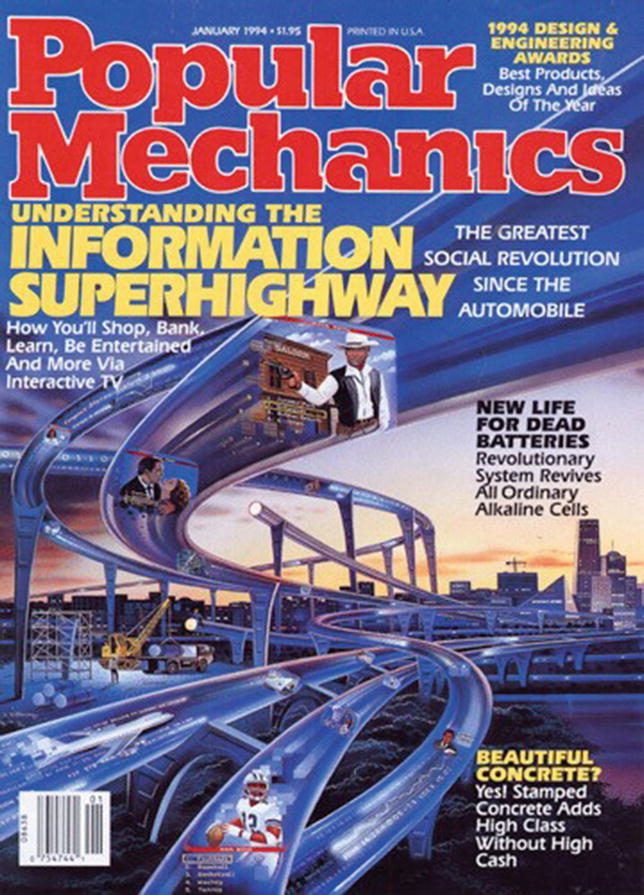The world was a very different place before the Internet was around. Most of the social media and microservices we use today would not have made sense in the past, and for very good and valid reasons. In the past, they would have been a waste of time. Why would you use a toy like the Internet to talk to people when you could simply meet them in person? Spending an entire Saturday looking at cat pictures would have been considered madness! Times have changed, though. The story of blogging is perhaps the greatest story told using the Web. It is a story of change; not just how society changed, but how the mindset of a generation changed with time. The times have changed to such an extent that the Internet is now perceived as a common tool, available to everyone. How did such a paradigm shift happen? Moreover, how did the beginning of Internet become associated with blogging? What applications was the Internet supposed to provide in the early days? These are some of the questions we explore in this chapter.
Here Be Dragons
CERN is often hailed as the birthplace of the Internet, but the developments leading to the foundations of the Internet can be traced back further. The first description of connecting multiple machines in some sort of interacting network was proposed in 1962 by J. C. R. Licklider, a scientist at MIT. He had worked on a new aspect of networking that he called packet-based networking and wrote a series of letters explaining his ideas in August 1962. This early concept was one of the first proposals for a connected network and this idea eventually matured into a concept known as the galactic Network . Licklider envisioned a globally interconnected set of computers through which everyone could quickly access data and programs from any site. Philosophically, this concept was very much like the Internet that exists today, but the infrastructure to make it possible did not exist at the time. The story of Internet is also a testament to heavy investments made by the government in research that would one day connect the world.
Note
The Internet essentially started as a tool to allow scientists to communicate with each other. Thats why a historical account of developments is provided here. It is truly phenomenal to see how investments in curiosity-based research more than 50 years ago have completely changed the world today.
Licklider was the first head of the computer research program at the Defense Advanced Research Projects Agency (DARPA) , a military research organization that was finding practical uses for the computer. While Licklider was at DARPA, he convinced a few MIT researchers, including Lawrence G. Roberts, of the importance of his networking ideas. Leonard Kleinrock, also at MIT, had just published the first paper on packet switching theory in July 1961, probably the first person in the world talking about this new idea. Eventually he would publish a full book on the topics initially explored in that paper and the broader subject in 1964. Kleinrock talked to Roberts about this new idea, as he really wanted to explore it further and see what kind of information could be passed through packets. Kleinrock convinced Roberts of the theoretical feasibility of communications using packets rather than circuits, which was a major step along the path toward computer networking.
Roberts joined DARPA in 1966 and continued to work on developing his computer networking ideas further into the future. He later proposed an idea for the first galactic supernetwork that would link up research scientists in labs. He quickly put together his plan for the network, which he called ARPANET , in 1967. He presented the work and his paper at an international conference. Surprisingly, at the same conference, another paper by Donald Davies from National Physical Laboratory (NPL) in the United Kingdom talked about a similar packet networking concept. This new group had worked on a prototype for transmission of voice securely through a network of connected machines for the military since 1964. Coincidentally, this work at MIT and NPL proceeded in parallel without either group knowing about the work being done by their fellow researchers. Their subsequent collaboration would progress over time to the point when ARPANET became NSFNET, which was an effort to connect all publicly funded supercomputers. Even more developments would come to these networks before file transfer and sharing protocols became stable. On the other hand, primitive versions of Transmission Control Protocol/Internet Protocol (TCP/IP) were being developed and packet-based transfer was beginning to be well understood in the 1980s. At this time, the Internet was still only usable in research labs, and the general public didnt have access to it or any application for it. Eventually, in the mid-1990s, ARPANET and NSFNET would be decommissioned and the Internet would be opened to the public through the introduction of web browsers.
A very interesting transition happened around the late 1980s. There were various ideas about what the future of the Internet would look like but no one took it seriously. Most big technology companies and the general public were thinking about a new idea called the information superhighway (Figure ). This highway was going to connect the world and make information available at super high speeds. It would be much better than the toy that was the Internet.
Figure 1-1.
Depiction of the information superhighwa y that would connect the world. Photo credit to Popular Mechanics magazine.
Commercial Internet: CERN
Thankfully, all the talk about an information superhighway turned out to be just hype and it never turned into anything practical. The information superhighway was closed source and the intention was that only big companies would be adding content and bringing information to the general public. The world would be such a different place if the Internet was not as open as it is today. To understand how the Internet got into the hands of pragmatic folks and how this transition happened, we need to spend some time exploring the motivations behind the transition. More often than not, world-changing technologies comes to light after years of research and development. It was expected that the Internet would achieve mass adoption, but to accomplish that it had to be trendy and appealing. This can be done very well in existing capital markets and this was one entry point for startups to get involved and make the Internet easily accessible. After a certain point, a tool or a project can reach a large enough user base that a revenue model can be developed and attached to it. The primary motivation in commercializing a research outcome and mass adoption is having well-defined distribution and revenue models. This is the crucial evolutionary step where the tool or a product becomes a company and the company can put more wood behind the fire, because the returns will be that much greater. There was still more work to be done before private companies could become interested. The first major development was a standardization of protocols that can be used to connect machines with each other.
















